Вы здесь
Mausoleum of Kaldyrgach biy (Tole bi).
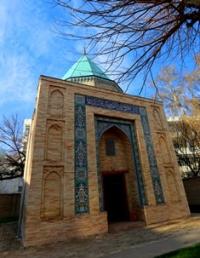
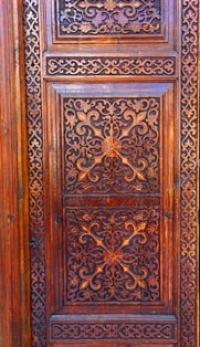
Visit Tashkent.
“…They seem to imitate the native land of Tole biy, the mountain peaks of the Tien Shan and Alatau. The origin of the form of tent-roofed mausoleums is associated with the ancient burial customs of the peoples who inhabited the northern regions of Central Asia, which explains the amazing persistence of this form in them, which was used recently in the grave structures of the Kyrgyz and Kazakhs."
G.A. Pugachenkova.
Great Silk Road Tashkent.
The mausoleum of Kaldyrgach biy (Tole bi), located in the center of modern Tashkent in the square formed by the streets: Alisher Navoi, Abay, Ladzak and Abdulla Qadiri, is part of the Sheikhnatur ensemble, 121 meters east of the mausoleum of Yunus Khan, 24 meters north of the mausoleum Sheikh Khovendi at-Takhur (Sheikhantaura) Kaldyrgach biy in the Almazar region.
The mausoleum of the Tashkent ruler of the XVIIIth century, Tole bi, nicknamed Kaldyrgach biy - "swallow", entered the chronicle of history as a follower of the teachings of Ahmad Yassavi, a fair judge, an excellent orator who knew how to ignite the people with his speeches and the leader of the struggle against the Dzungar-Kalmyk invasion of Central Asia.
This mausoleum is the only one in Tashkent with a conical ribbed, pyramidal dome, which is unusual for Uzbekistan. The mausoleum was built in the first half of the XVth century. The courtyard and decoration of the mausoleum have not survived.
According to one of the first researchers of this historical and architectural monument, G.A. Pugachenkova, the outer tent-roofed pyramidal dome on a high 12-sided drum is characteristic of the buildings of steppe nomads. According to the scientist: “...they seem to imitate the native lands of Tole biy, the mountain peaks of the Tien Shan and Alatau.
The origin of the form of tent-roofed mausoleums is associated with the ancient funeral customs of the peoples who inhabited the northern regions of Central Asia, which explains the amazing persistence of this form in them, which was used recently in the grave structures of the Kirghiz and Kazakhs”.
This historic mausoleum is especially revered among Kazakhs who live in the capital of Uzbekistan, its environs and in the territory of southern Kazakhstan. If you believe the legends, the building got its name from the name of the leader from the clan of Kazakhs, his name was Tole biy.
He ruled the Elder Zhuz in the first half of the 18th century and was nicknamed by the people "Kaldyrgach", which means "Sacred Swallow". According to legend, the opposition to the Dzungar tribe was led by Tole bi, the ruler of Tashkent, who came from the Kazakh tribe Dulat.
According to popular legend, when countless Dzungar hordes began to approach from the east, people fled in panic, abandoning their homes. And Tole bi did not leave his home. The head of the Dzungars ordered to bring him to court, and asked him if he was really not afraid of anything.
Tole bi replied that he did not want to disassemble his yurt and ruin the swallow's nest with newborn chicks. This confession touched the harsh Dzungar so much that he did not harm either this righteous man or his family. Since then, Tole bi became known under the name Kaldirgoch biy - "The Master of the Swallow".
Subsequently, Kaldirgoch biy inspired the people to fight the Dzungars, and after the expulsion of the foreigners, he was elected governor of Tashkent. After his death, he was buried with great honors next to the grave of the holy Sheikh Hovendi Takhur.
During the existence of the mausoleum, its dome was badly destroyed. It was restored only in the seventies of the XX century. The cruciform hall of the mausoleum consists of four niches, near the corners of which there is an ancient circular brick staircase and hujras (rooms intended for students).
The crypt, which has a square shape, is located above the main hall. The foundation of the solid structure was laid at a depth of about one and a half meters and consists of special wooden fixtures, thanks to which the walls of the mausoleum themselves have remained intact to our time.
The facade of the building is practically not tiled, only near the base of the dome are ganch stalactites of the XVth century preserved. To date, it has not been possible to preserve the decoration of the building, the decoration of the territory and the adjacent courtyard.
The mausoleum was restored in 1996, architects: Adilov S.R., Khalibekov M., consultants Kalmenov T.Sh., and Turisiekov Z.O.
Geographic coordinates of the Kaodyrgach biy mausoleum: N41 ° 19'23.53 "E69 ° 15'32.01"
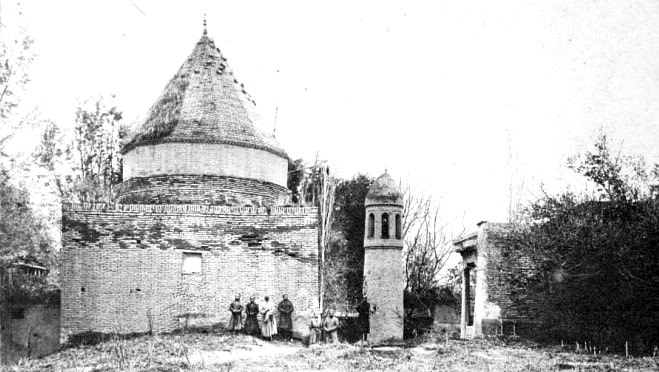
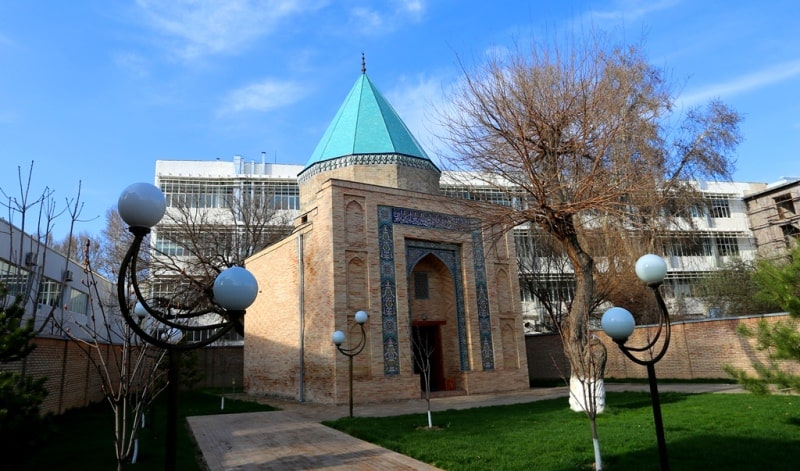
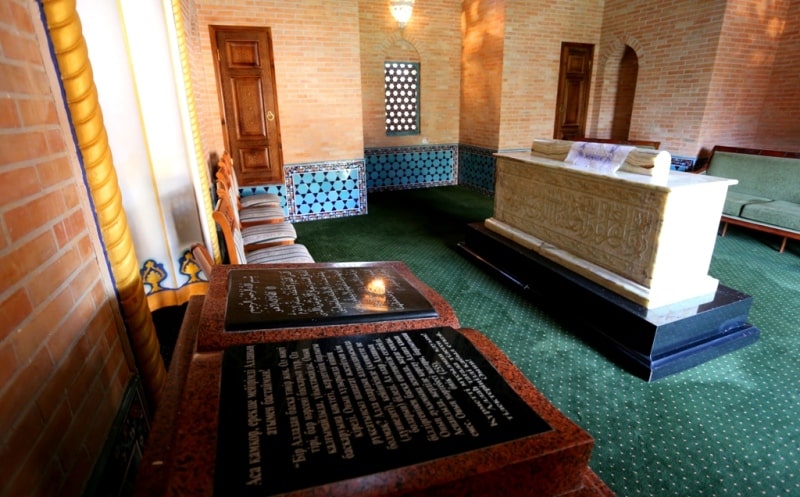
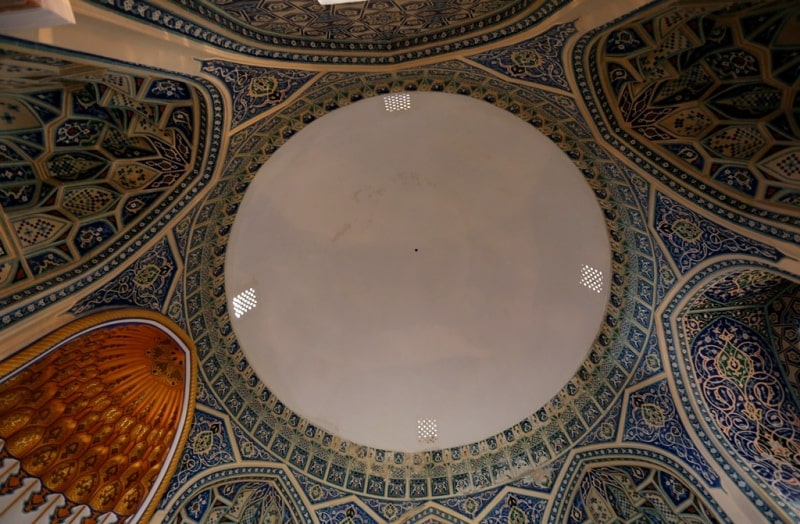
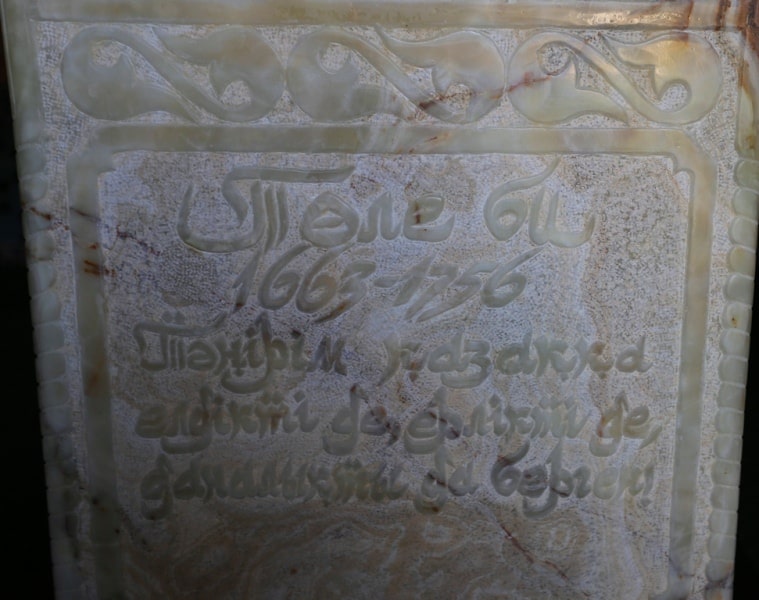
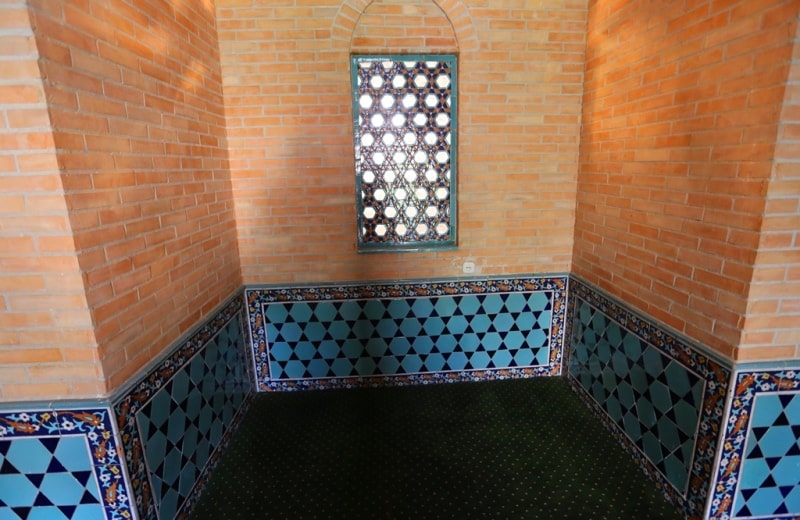
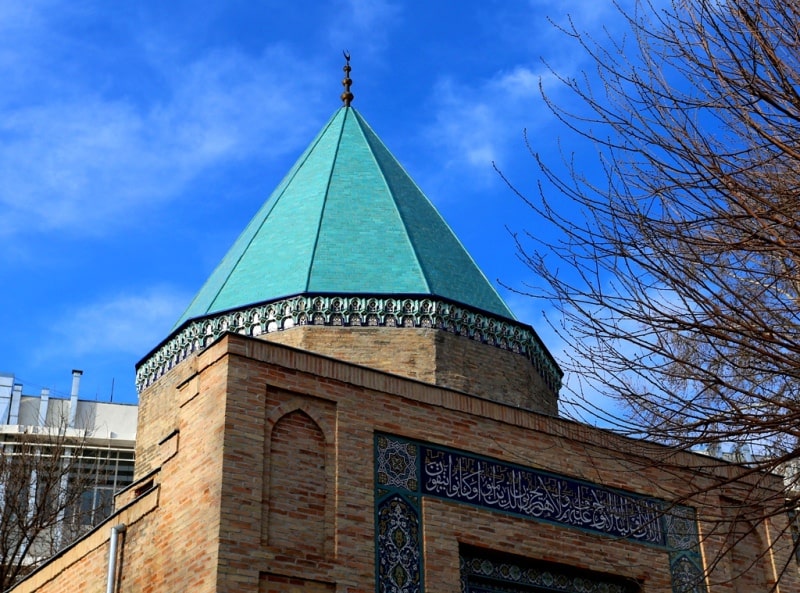
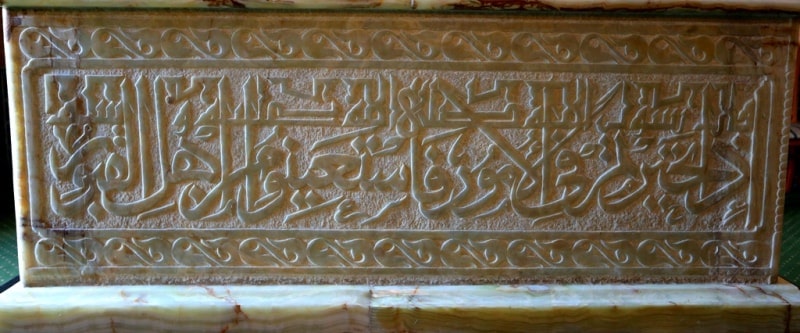
Authority:
https://www.tourister.ru/world/asia/uzbekistan/city/tashkent/placeofinterest/26421
Photos by
Alexander Petrov.







